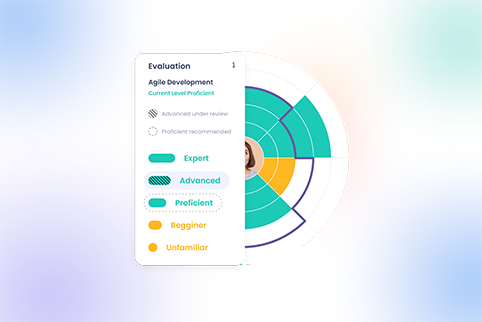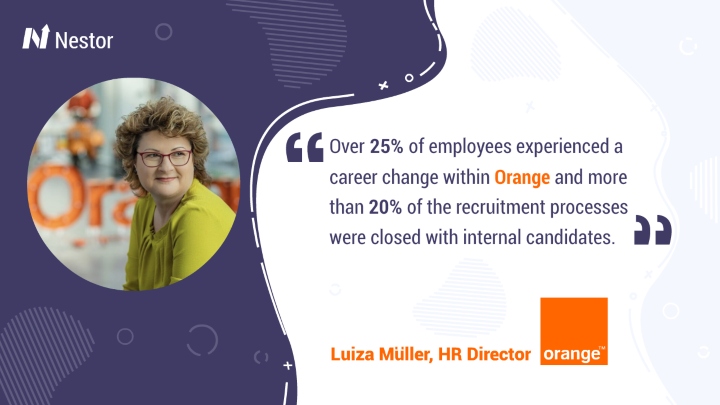Coach vs Micromanager: How to Become a Leader Who Inspires
7 min read

Coach vs Micromanager – which one do you prefer working with? It takes hard work to become a leader who inspires, a coach who genuinely cares about their colleagues’ growth, both individually and as a team. In other words, a leader who will take a step back and make the others shine.
In one of its articles, Gallup mentioned that some people refer to a micromanager as a “boogeyman”. Hence, only thinking of the definition, “mythical creature used by adults to frighten children into good behavior“, raises several issues and concerns. Frightened? Children? Good behavior? These are big concerns threatening the employee experience, as well as general performance and growth.
Spot a micromanager
Most likely, a micromanager wants everything done their way (as good experts, they know best). However, they usually provide little context for it. And some of them will hide it under the importance of feedback. Undoubtedly, feedback is a gift and helps us explore and develop our potential.
However, there is a big difference in providing constructive feedback for growth and giving feedback on something that’s done differently, without stating clear expectations from the beginning. In other words, the power of setting clear expectations comes with saving time and unnecessary effort. Next, we can provide constructive and developmental feedback.
Micromanager, under the compassion lens
Usually, micromanagers are very well prepared experts in their fields, who grew into a managerial role. They really know what they are doing, while their experience and knowledge are clean and tidy.
The majority of micromanagers are doing all of this subconsciously, without the intent of harming or hurting someone. So, instead of pointing with a finger, help them grow into a coach. If you were to look at them with compassion, what might trigger their behavior?
Explore what makes them act like this and what needs they hide behind it. Help them acknowledge and be aware of the impact their behavior has on employees and company. And then, guide them to become coaches for their teams.
Coach vs Micromanager: Impact
Furthermore, let’s dive into several examples of the impact a coach might have on their team in comparison with a micromanager:
- A micromanager focuses on efficient allocation of resources. Instead, a coach unlocks people’s potential to maximize performance. There is no doubt it is useful and valuable to know what your resources are and how to be efficient with them. But what a great opportunity to share this wisdom with others and explore together individual strengths to unlock potential!
- A micromanager tells, whilst a coach actively listens and asks more questions. We’ve shared here a mini-guide on how to have more meaningful 1:1s and how to ask powerful questions.
- A micromanager usually has the best answers and solutions. A coach enables people to come up with the best answers and solutions. A coach believes people are resourceful, creative and able to identify alternatives.
- A micromanager asks How? and When?, while a coach asks What? and Why?
- A micromanager embraces a top-down approach to problem solving, while a coach co-creates and facilitates problem solving by empowering their people.
- A micromanager commands and controls. Instead, a coach questions and challenges, encouraging his or her people to develop and practice critical thinking.

Coach vs Micromanager: How to build trust
One of the causes of micromanagement is the lack of trust and support amongst the manager and colleagues. It takes time to nurture and build trust. However, in the long run it will be beneficial for all the involved parties. In Brené Brown’s podcast (episode on Trust: Building, Maintaining, and Restoring It), Charles Feltman shared four assessments of trust he uses when working on this subject:
- Care: When somebody assesses either to trust you or not, they are being vulnerable (consciously or subconsciously). Hence, through this assessment, trust refers to the belief that “you’ll have my interests in mind as well as yours”. In other words, you care.
- Sincerity: In this assessment we think of emotional honesty and integrity. Are you walking the talk?
- Reliability: Are you keeping the promises and commitments made?
- Competence: Do I trust your ability and knowledge to actually do the work?
Next, being aware of these assessments will help you discover what’s the core issue causing the lack of trust. And since you know and can name it, it’s easier to identify a solution and overcome it.
Develop and encourage a growth mindset
Do you believe that people can learn and develop new talents? Or do you think that our intelligence is fixed and that we only have what we were born with? People with a growth mindset believe everyone can improve and is resourceful.
As a manager, enable your people to identify their own solutions. It requires work and patience. However, in the long-term you will free your mind and time. The biggest advantage is that you now regained the capacity to focus on more strategic topics, as well as on developing more leaders.
Sharpening your coaching skills
If you were limited to developing one skill only, go with the Active listening one. Here’s how you can practice it:
- Pay attention. Be present and genuinely curious about your colleague. Ask them how they are doing. But do it only if you really mean it.
- Notice non-verbal cues. Indeed, now with virtual meetings it’s getting harder to observe them. But not impossible. Hear their voices. Does their voice and body language send the same message? If not, bring it to the table. Share with your colleague what you noticed and kindly ask them to express what is happening for them in that moment.
- Acknowledge and see them. Be empathetic. By only saying “What I hear you saying…”, “Ohh, it must not be easy..” can help you bond and create a trusting relationship.
- Ask and listen more than you talk. Period.
Connect. Connect. And connect.
We are often in a hurry. And we do have deadlines and unfinished ‘to do’ lists. As a result, we forget or deprioritize connecting with our colleagues.
During your 1:1s, have a heart to heart conversation with your colleagues. Identify what are their fears. Maybe they feel disapproved by someone or something. Maybe they have personal (financial, or other) issues and they fear making a mistake. One of the greatest disconnectors is fear.
Independently of the cause, if fear is what they feel, the chances they will underperform are very high. Brainstorm together and come up with ideas on how to better and more frequently connect with each other: individually and within the team.
Coach vs Micromanager: Final thoughts
Of course there are moments when employees need more direction, especially when they experience something new. However, that doesn’t mean that you as a manager have to provide a step-by-step, the ultimate and unadjustable guide. And we are not referring to the standards that, unfollowed rigorously, might increase some risks, such as safety, for example.
With some exceptions, people are not, usually, badly intentioned. We all have our own battles, filters we are looking through at things and our own perceptions. Remembering this helps see other people with more compassion and understanding. And this is the right mindset for constant yet steady performance and development.
In case you have a colleague who is not performing, instead of blaming and thinking impatiently, try to understand what is the real situation, what is hidden below the tip of the iceberg. As a leader, one of your main responsibilities is developing others and identifying the right place for your teammates. To identify peak performance, start by assigning and discussing tasks that your colleagues are good at, that they enjoy doing and that add value to the organization or the project.
There are many guides on coaching employees, or models you might use. However, choose the one(s) that resonate with you and help you become an impact player who makes a difference for their people’s development. And make a note to yourself, “People don’t want to be managed, they want to be led“.
People don't want to be managed, they want to be led.
— Liz Wiseman







